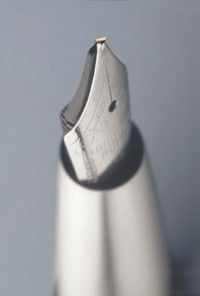practice
economics
It May Be Time to Use a Scribe
A scribe can ease your workload and help in documenting records.
By Mark E. Kropiewnicki, J.D., LL.M.
It's been our experience that ophthalmologists are probably the most intensive users of scribes among all the medical specialties. If you don't currently use a scribe, you may want to consider the many reasons why doing so is generally a wise idea.
Good Documentation is Key
Proper documentation of medical charts is an increasingly important requirement. Should you use an Electronic Medical Record (EMR) for this task, or should you continue on paper? Should you rely on yourself, or could a capable scribe make your life easier and provide more accurate documentation of your patients' treatment? First, ask yourself these important questions:
- How fully do I need to document my patients' charts?
- Do I need to take my valuable time to write down what may never even be read?
- Will my records withstand a Medicare or other payer audit? Will they, in hindsight, provide enough information to explain the continuation of treatment or additional testing? Will they withstand later scrutiny by a stranger?
Clearly, a trade-off exists between the additional costs of ophthalmologist documentation and the possible later cost of not adequately documenting the chart. With the ever-increasing emphasis on chart documentation, how can you reasonably absorb the cost while obtaining an accurate and thorough representation of the patient encounter?
|
|
|
|
|
How a Scribe Can Help You
Consider using a scribe as someone whose purpose is to follow you around and document your patient encounters, fill out prescriptions for your signature, help you stay on schedule, and generally serve as your clinical secretary.
Ideally, the role of the scribe is to capture and record all of your significant findings and observations, enabling you to concentrate exclusively on administering treatment and interacting with your patient.
Whether chart documentation is in an electronic or paper format, by you talking out loud for the scribe and the patient to hear, the entire process is improved. (I prefer paper documentation for smaller practices. Large practices can afford the EMR, but I believe a truly functional, easy-to-use EMR is a few years away.)
While you would naturally want to initial or sign off on all patients' charts to authenticate them, that process is much more efficient than if you had had been doing all the writing in the first place.
A scribe should also act as a check on the system, ensuring that all of the elements of the examination and the need for further action have been fully documented.
Using a scribe works best if you have a busy, high-volume practice, as this is usually where the documentation requirements most challenge your efficiency. Similarly, in a "high-touch" practice, using a scribe allows you to focus completely on the patient and the reason for the visit.
A Scribe's Role is Limited
Scribes must be used to enhance an ophthalmologist's capabilities and not to play any other role or make any medical decisions.
Scribes are also expensive. Pay for a full-time scribe averages $25,000 to $30,000 a year. The scribe should be able to improve your efficiency sufficiently so that her productivity more than pays for her salary. That means a scribe should be trained to do her job so that she neither omits nor embellishes critical information.
A scribe will also probably need to be trained in medical terminology, your practice style, and your own personal verbal nuances.
When properly integrated into an ophthalmology practice, a capable scribe can be as important to your clinical staff as your ophthalmic technicians and assistants.
Mark E. Kropiewnicki, J.D., LL.M., is a principal consultant with The Health Care Group, Inc., and a principal and president of Health Care Law Associates, P.C., in Plymouth Meeting, Pa. He regularly advises physicians and practices on their contracting matters and business law obligations. He can be reached at (800) 473-0032.









